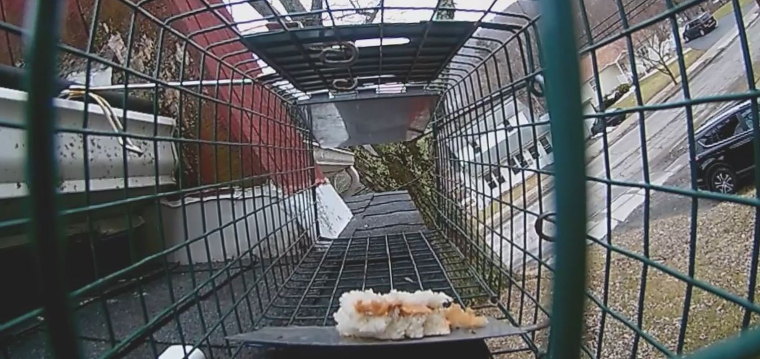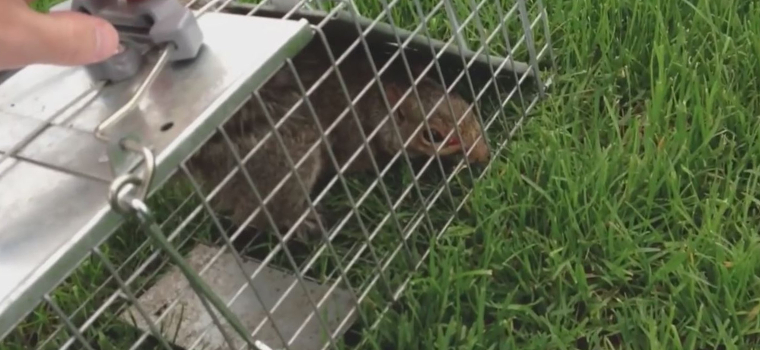-
info@aaanimalcontrol.com
Call us for help in your town
Humane Wildlife Education
Best Bait to Trap Squirrels
Need squirrel removal in your hometown? We service over 500 USA locations! Click here to hire us in your town and check prices- updated for year 2020.
There are so many foods that you could use as squirrel bait, it probably won't make too much of a difference what you choose. There are foods that will have more benefits (or negative points) than others, but anything peanut based seems to be a big hit. These squirrels are more than happy hunting down the seeds, nuts, and berries in your bird feeder, so it would seem like a sensible place to start.

Try bird feed, seeds, nuts, and berries first.
If that doesn't work (and providing all of your exclusion devices or traps are in the right places, for best results), you could try using peanut butter. This sticky substance ensures the animal has to do a little bit of work getting it off, making it perfect to smear on the pan of the trap, peanuts and little blobs of peanut butter making a trail right to where you want it to go.
Squirrels that live in attics and other buildings will generally need more in the way of moisture than squirrels in the wild. The latter will pick habitats that are close to water sources, but this might not always be possible in residential or commercial settings. If this is the case, you could try fruits with a high water and sugar content, including oranges. Citrus fruits do not repel squirrels despite what you may have read on the internet.
Foods that smell strong are good, because they are likely to lure the squirrel in even when it means differing from a regular path. This doesn't mean that you can rely on a really good bait choice to make incorrectly positioned traps work, however. Alongside oranges, you could also consider strawberries and other berries or fruits. What you do need to bear in mind that is that these sweet treats may also attract other pests, such as flies, ants, wasps, bees, and perhaps even rodents and bigger scavengers.
To be honest, squirrels eat pretty much anything, both meat and plant based, meaning that a trap positioned in just the right spot will be effective no matter what you put inside it. These are animals that are just as happy to go rooting through a dumpster for food as they are eating seeds and nuts from a bird feeder.
What tools and equipment will I need to trap squirrels?
Need squirrel removal in your hometown? We service over 500 USA locations! Click here to hire us in your town and check prices- updated for year 2020.
Before you embark on your squirrel trapping mission, ask yourself this very important question:
Do you really need to trap that squirrel, or is there a better way to deal with the problem?

In many cases, trapping wild animals isn't the best or most effective solution, although you may not consider that to be the reality when you first begin. What could possibly go wrong? You're simply trapping the animal with the intentions of letting it free in a nice wooded area somewhere, ready to start life again.
Here are a few things that could go wrong to start with:
1) There's a pretty high chance that you're releasing a mother squirrel into the wild without her babies. She will come back for them, even if you drive a great distance away. If she can get back, she'll then try to break back in again. If you haven't sealed your building effectively, or done your bit to remove the nesting spot, the problem will go right back to square one.
2) You might not drive far enough away to release the squirrel. We recommend driving at least ten to fifteen miles, but the more distance you put between your home and the release spot, the better. If you don't drive far enough away, the squirrel will probably be back at your house before you even manage to make your way back there.
3) If you did release a mother without her young, the young will die in the nest. If the nest is in your attic, you will then have a nest filled with between three and six dead baby squirrels. These will act as food for passing scavengers and predators, likely attracting flies and rodents. The smell will get worse the longer they are left there, and if they are near a source of heat or summer hits, the stench will just get worse.
4) Trapped-and-released animals are vulnerable when they are released alone, so releasing a female with young is going to increase the vulnerability factor. Stress, lack of food and nesting spots, and increased predators put a newly released squirrel at risk. In reality, trapping and releasing wild animals is actually quite an inhumane practice and rarely works out with the happy ending you'd hoped for.
Exclusion devices can work much better than trapping squirrels, especially if you have youngsters that are just about ready to leave the nest. If you're lucky, you can grab the female between litters (if she has two), evicting her once the first litter is old enough to take care of themselves, but before she has the second lot.
Exclusion devices also eliminate the need for too much human intervention, which also reduces the amount of ‘stuff' you will need to get the job done. You won't need to get too close to the animal, which means that wearing gloves, breathing masks, and eye protection isn't necessary. In fact, there's a chance that you won't come into contact with the intruder at all. You will still need these protective items to remove any waste and debris the animal has left behind, but trapping almost always means more direct contact than exclusion devices.
For more information, you may want to click on one of these guides that I wrote:
How much does squirrel removal cost? - get the lowdown on prices.
How to get rid of squirrels - my main squirrel removal info guide.
Example squirrel trapping photographs - get do-it-yourself ideas.
Squirrel job blog - learn from great examples of squirrel jobs I've done.
Squirrels in the attic - what to do to solve the problem.


















